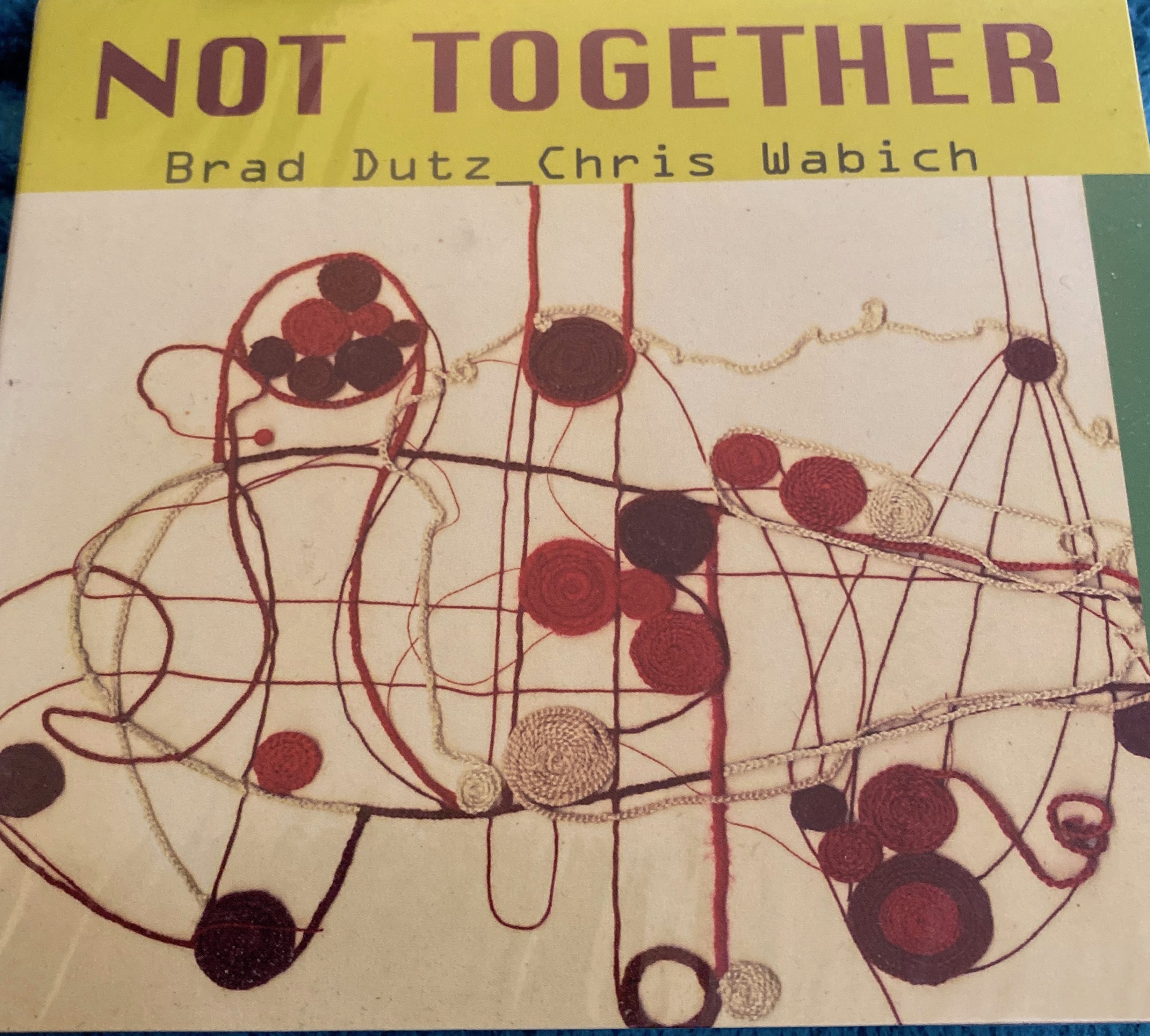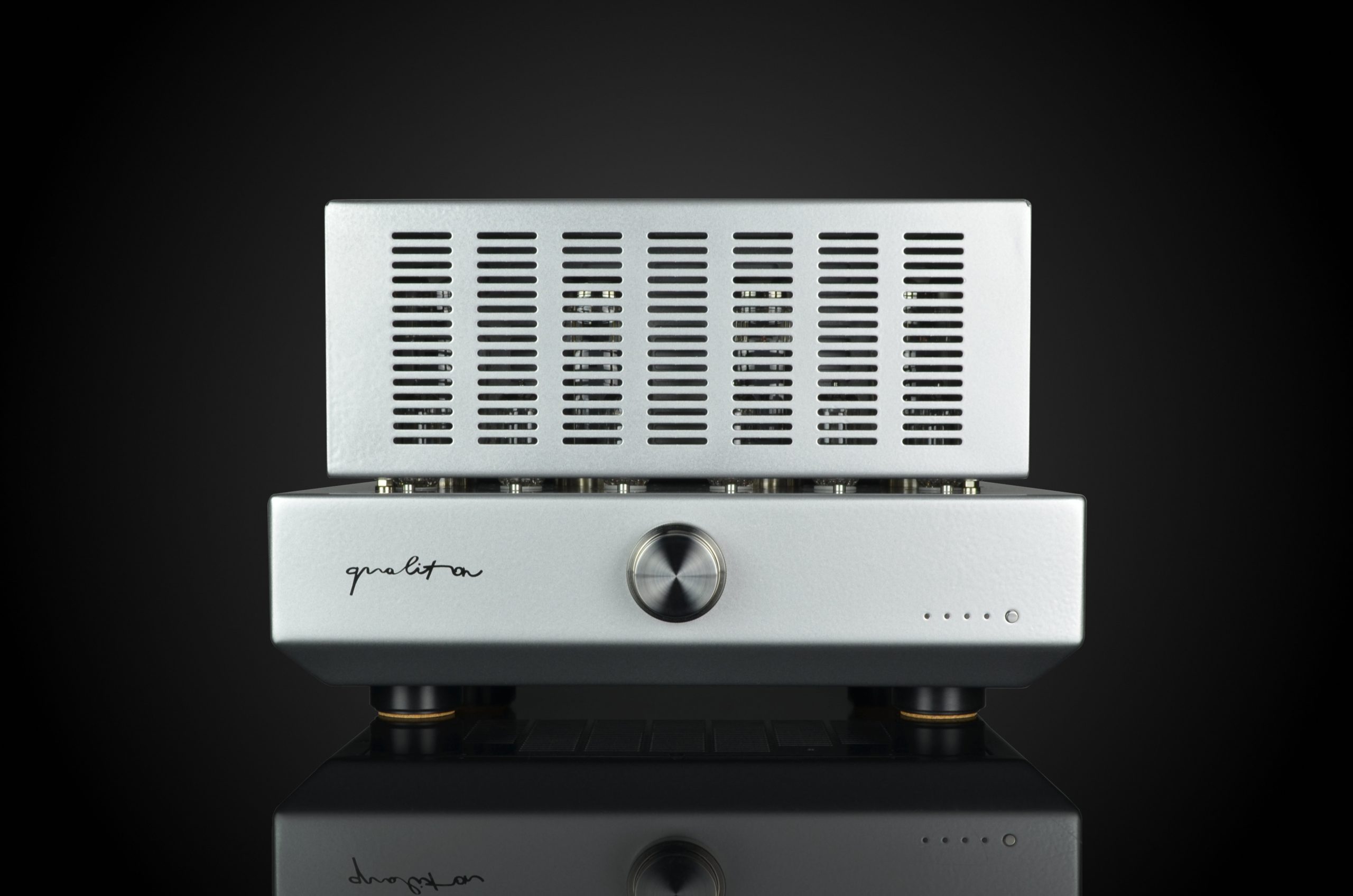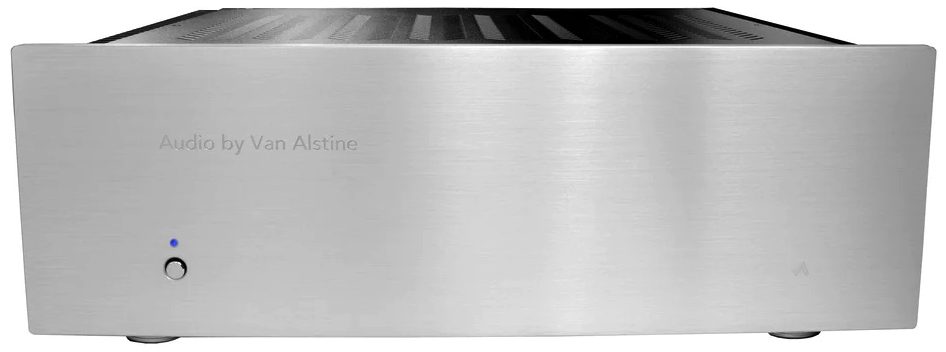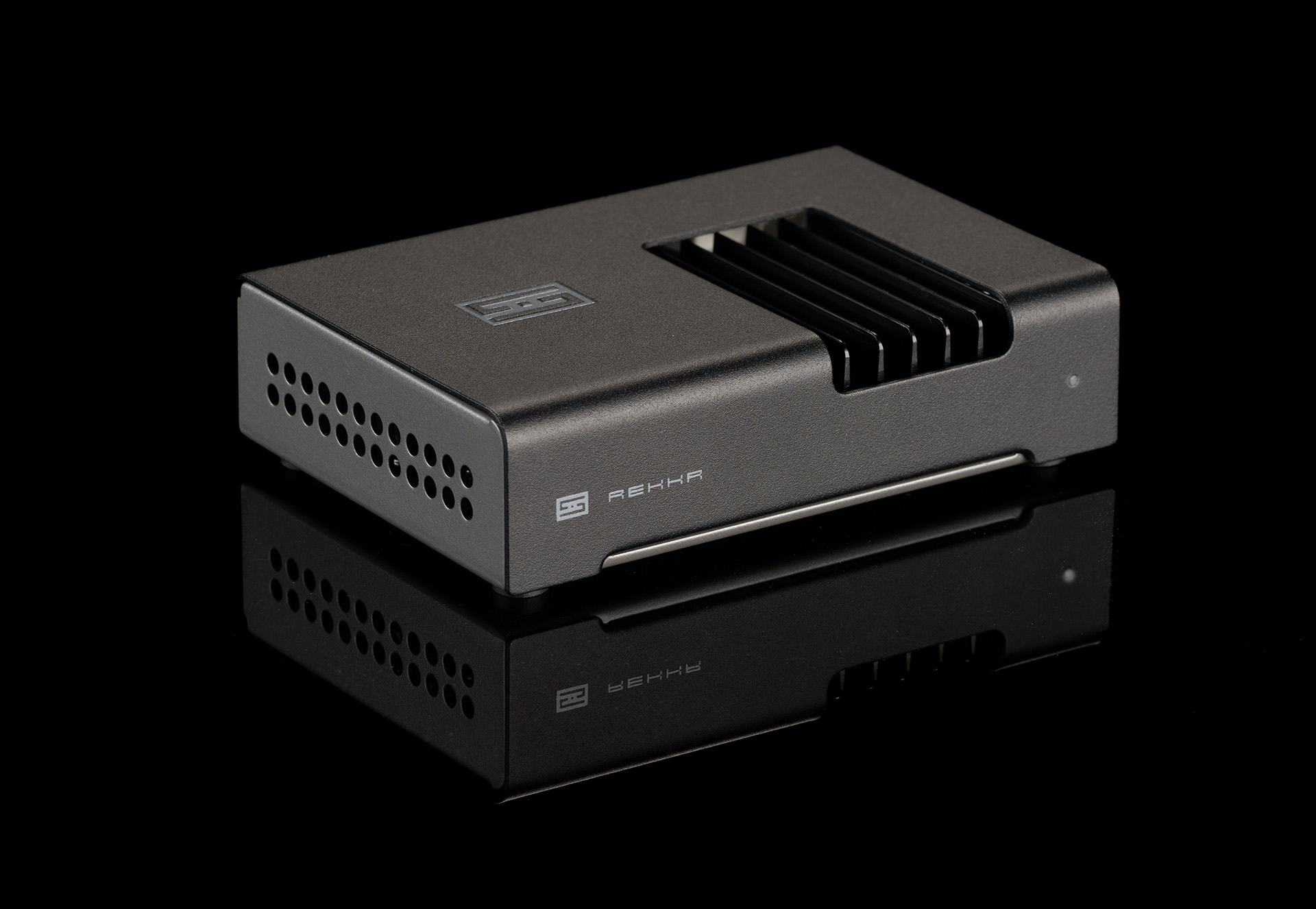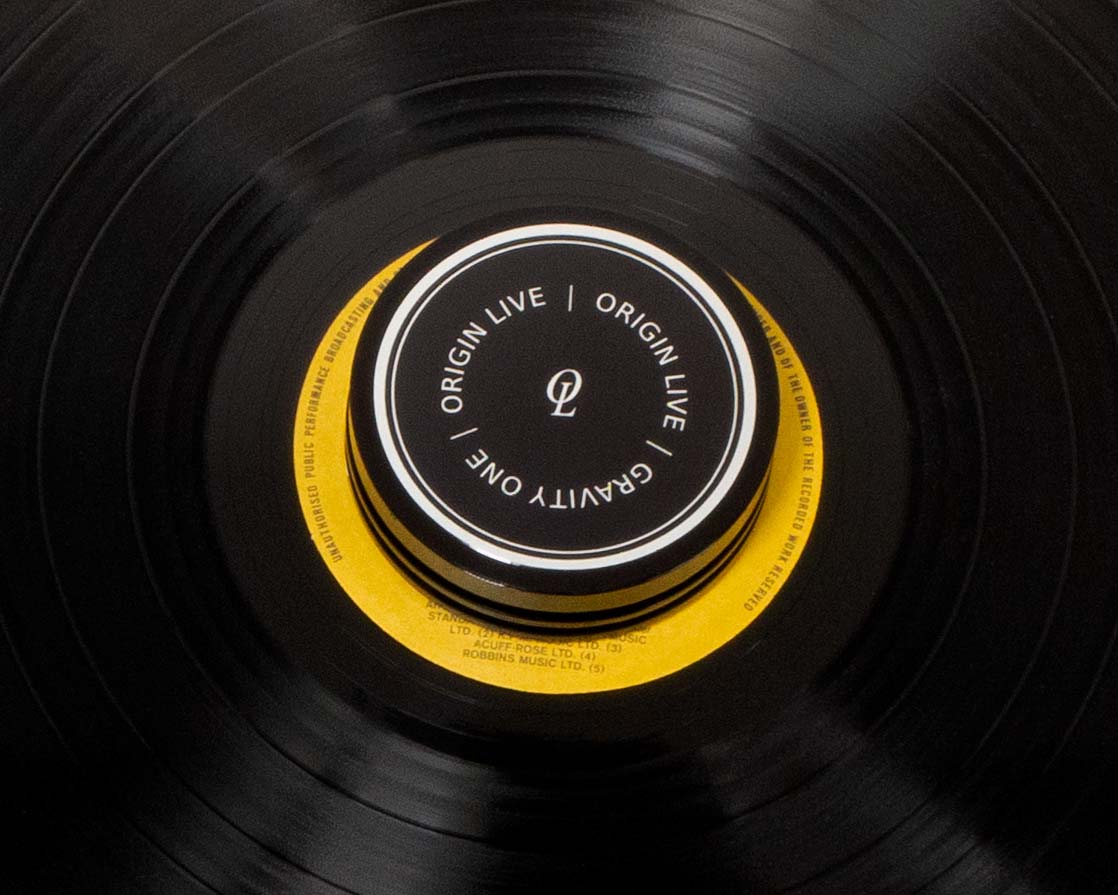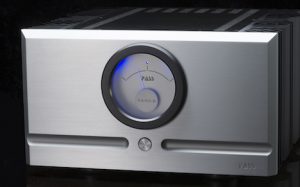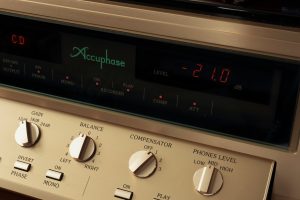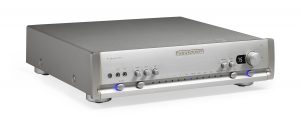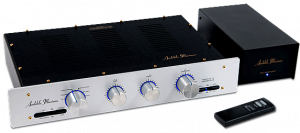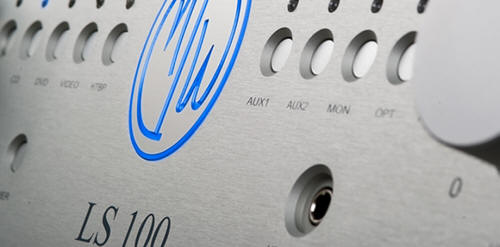
It is a good time to seek out good gear these days. There's more functionality, interoperability and really, really good sound than ever. Yes, the pricing on some gear is incomprehensible, I cannot fathom or do not want to imagine that the price of an amp exceeds the price of nearly any car. Having said that, I see an array of components available now that might well have slaked my audiophile thirst for less than the cost of a "compromise" purchase maybe ten years ago. In my mind really good sound, a step up from acceptable to satisfying, is way more available than ever before, ModWright's LS100 preamplifier being an example of the latter.
Why ModWright?
My speakers are tough on preamplifiers. There are a lot of preamplifiers that sound OK and not many that are musical AND detailed in my setup. I recently sold my EAR 864 preamp because of how it was being used—or I should say because more than $300 worth of NOS Mullards might bake away on any given weekend because my wife or son might forget to turn it off till I noticed on Sunday night! So, I've been thinking without any intention to act on purchasing a new preamp for a while.
Marten Design speakers from Sweden are similarly tough on preamplifiers. They can sound amazing and... they can also ring intolerably to me. Before I knew I was hunting for a new preamp heard a ModWright preamplifier at "THE Show Newport Beach" in 2014 driving Marten speakers. I recall that Dan Wright, the Wright in ModWright was providing all the electronics in a system wired with Dynamic Design Cables through Marten speakers. The sound was really good in my mind, balancing timbre, detail, and an extended frequency response without ringing. Shortly after that I contacted Dan Wright about a review sample and several months later (note the pull I have in this industry?) An LS100 arrived at my office.
Where Are We At?
The LS100 has been around for quite some time so I won't be unearthing new information here, just shining a light on a product worth alighting on. The LS100 replaced Modwright's first preamp design, the SWL 9.0E. Modwright started their work around the time of Y2K modifying other's manufactured gear. With success in the modifications world, Dan added his own designs to his modification services.
Dan's attention to detail is evident in the execution of the LS100. There are a range of really nice ergonomic and design touches that reflect useful attention to detail and made using the LS100 a pleasure. For the most part, I find Dan's choices well informed, though not without a nit to pick.
The LS100 retails for $3750 as a line stage. It can also be dressed up with internal boards, a nice touch as it eliminates another box to accommodate on your shelf and the cables to connect them. I have enjoyed having cool looking gear on my rack, such that more gear probably meant more pleasure to me (uh... why is that?). However, my family life has re-focused my attention and my audiophile adventures are fewer and ... less on my rack is now truly more appealing to me.
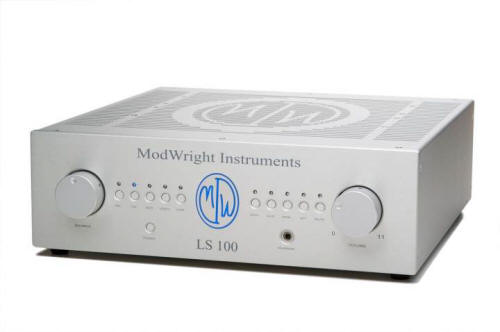
The LS100 is an evolution of the well received SWL9.0E. There are now balanced connectors, though not a balanced circuit. In place of 5687 tubes are 6SN7 tubes which Dan says are more available. For the crack, er, tube heads this allows more tube rolling opportunities. Dan thinks the 6SN7 tubes were also a bit warmer and sweeter sounding. I'm not familiar with either tube and my brief internet research doesn't tell me which is more expensive, but if you're a tube roller in this instance more choices is better.
Dan's latest iteration reflects a growing development in the audio world, namely the ability to add a "card" to add functionality. Choose either a phono stage, MM or MC, or an internal DAC, but you can't have both. I am unsure about the ability to upgrade after the fact—a small surcharge for upgrading later would not be unreasonable in my mind. The internal phono stage moves your entry price to $4600 while the DAC brings the buyer to $4900. Inexpensive? No, but... read on.
The LS100 is BIG physically as it utilizes same the chassis as their midline integrated amplifiers. This results in a lot of unused space inside the chassis. Perhaps that extra space may allow the five tubes burning inside to stay a bit cooler and that will add to your tube life. The LS100 without a phono stage starts with a pair of the aforementioned 6SN7 tubes and a single 5AR4 rectifier tube. With a phono stage installed at the factory my unit arrived with a single 12AX7 (ECC83) and a pair of 12AU7 (ECC82). Use the 12AX7 and 12AU7 for more gain or two 12AU7s for lower gain, e.g. the 12AU7s will ably amplify a moving magnet or a higher output moving coil. The LS100's phono stage was a good match for my Dynavector XX2MkII cartridge a 0.28mV low output moving coil design. I had plenty of gain free of distortion. If you're a tube user you'll be pleased with the choice of a 12AX7 as there are a plethora of NOS tubes available, not so much the case with 12AU7s, or at least that has been my experience.
The front of the LS100 is a clean aluminum look, back lit with a blue light. At night a blue light shines out of the front panel and the perforated top plate creating a nice impression. I found this appealing, a nice balance between simple and elegant with a slightly "cool" mien. The knobs and buttons have an excellent quality tactile touch. Two large knobs, balance and volume from left to right bookend the faceplate. In between are buttons for selecting source or other functionality, as well as a headphone amp. Each button simultaneously provides an audible click as well as a blue LED lighting up to confirm your choice.
Sticking with the nice touches, when powering up, the LS100 automatically engages its mute function and magically the volume control rotates to "off"—really liked that effect. Silly but a pleasure nonetheless. Set your watch for about 45 seconds for the mute to release.
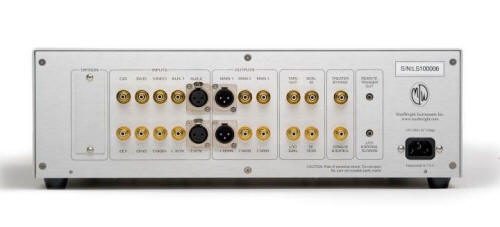
On the LS100's back are a range of RCA and XLR connectors, which rather frustratingly on my sample lacked a designation of right or left either by use of those words or by color coding the RCA connectors. This left me a bit adrift on how to connect. Employing the scientific method I threw a dart at what I thought was the right answer and used that consistently to chose left/right. My dart accidently hit upon the right choice. The front panel also includes a headphone jack. Plugging headphones in will not mute the speaker output so you'll have to turn off your amplifier or both your headphones and speakers will be making music.
Among the interesting features that make the LS100 desirable are the nearly AV level of remote control. Naturally, you get volume and source selection, the latter available by cycling through the various sources, mute and selecting the channel balance function. Some might complain that the remote is plastic and small but those aren't likely people hunting for a full function, tube preamp.
I will say, if my magic wand worked, I'd have the LS100 equipped with an iOS or Android app. Oppo has an iOS Media App that adds very useful functionality. I imagine iOS functionality, however, might break the bank at a boutique firm like ModWright. Truth be told I'm Cro-magnon and tested the remote volume control the first day I had it and that was about it. I'm happy to get up to change source and volume and did so without concern for two months.
HTB Good and Not So Good
These days my electronics make noise for a movie or hearing Super Mario's butt smashes more of than cymbal crashes. I've had essentially two systems for awhile one for movies and games and the other for "high end" pursuits, both of which play through the same speakers. I have needed to swap cables at the preamps and sources to go from one to the other. After four years of that I'm losing patience. Dan's preamp allows me to simply choose "home theater bypass" to switch with the press of a button from Mario to Mozart, using the home theater bypass button. Sound and convenience were the watch words for me.
The ModWright worked as promised. A nit I could pick is that the home theater bypass function requires the ModWright be powered up to go from game-movie function to the high-end. And, the tubes are up, running and... wearing out. If you are watching movies and games all weekend you'll be burning through your tubes for a less than high-end purpose. Alas, this sort of foolishness is rampant in my house. So, if you can remember to turn off the preamp when it's not in use, my issue will not be yours. I was, however, hoping to avoid continuously burning tubes. Still, unlike my E.A.R. 864, no cable swapping was needed.
NIT on Tube Rolling
I have a really nice collection of 12AU7 and 12AX7s in my closet—multiple backups of five or six varieties of 12AX7 alone. However, I didn't spend a lot of time rolling tubes. How did that happen? The LS100's cover is affixed by screws, twenty, YEAH! twenty of them. It's not quite as laborious as it might be as each screw takes about one and a half turns to be removed. For me at least, tube rolling was not really encouraged. Dan indicated that future covers will have fewer screws (maybe four?) which will facilitate tube rolling. I guess this reminds me that being an audiophile is being someone who cannot leave well enough alone.
Trouble Shooting Phono Stage
Another cool feature, intended or otherwise is a troubleshooting phenomenon. At the end of my review I started to hear a frdrdrdrd sound of a failing tube. Damn, I thought, five tubes inside. Which tube is it going to be and how long will it take me to find out? With my previous reference E.A.R. 864 and it's five tubes an intermittent tube problem sometimes took hours to track down—if the intermittence was continuous, but heaven forbid if the intermittence stopped, that's really hard to track down. And, I might have to cycle through all five tubes to find the failure. With the LS100 a simple switch from phono to line stage eliminated the frdrdrdrd sound and rechecking the phono stage thefrdrdrdrd returned indicating the fault lay in the phono stage. Trouble sussed out in about thirty seconds. Love that. While I am enjoying building stereo goodies myself these days, it doesn't mean I want to be tinkering endlessly.
Sound
Every product has some sonic signature and surprise surprise so does the LS100. For starters, the added phono board is of the same cloth as the line stage, so my descriptions here are largely the same for both. I'm finding good solid state and tube sound are getting closer and closer to each other. There was a time when I'd want the euphony of a "tubey" sounding preamp. Frankly when I bought my first tube preamp, an Audible Illusions Modulus 2D, I was disappointed that it lacked the warmth and coloration of the Modulus 2C. Today, I could enjoy a Modulus 2C, but I wouldn't have it as my only preamp. I enjoyed euphony and now I prefer a realistic sound. I'm not here to damn anyone who likes euphony, I'm just letting you know my bias at this time.
The LS100 sound is closer to neutral than romantic and if you can praise solid-state, as I can, it is more linear, less bloated and overall less full sounding than say the Modulus 2C. The liquidity and smoothness of the E.A.R. 864 preamp I used as a reference for nearly 13 years did not announce it's tube provenance nor does the LS100. Despite the presence of five NOS Mullard tubes in my 864, my reference was not a "tubey" sounding preamp.
Comparatively speaking the 864 was more liquid and sweet than the LS100. It also possessed a more saturated timbre and fullness than the LS100. The LS100, however, is closer in sound to my current reference, the YBA α 1 line stage, which I think is a distinct step up from the 864's. The ModWright, then is more linear, where linear is desirable. Do not associate my description of linear with a lean or analytical sound think clear and well enunciated; depending on the recording that could be more enjoyable or less enjoyable. You make your choices and get what you get and that's preferable to having honey on everything.
With the Modwright in house, I made my quarterly trek to Amoeba Records in Hollywood. After an hour and a half and an intention to exercise restraint, I returned home with $150 out of my bank account. Oddly, Amoeba's collection of music has moved from selling used vinyl to being populated with lots more 180 gram LPs. When did this happen? Seems like vinyl has truly become a darling for a broader audience.
One of my purchases included a 180 gram LP Louis Armstrong Plays W.C. Handy, a nice, but not great recording. The ModWright's resolution was good enough to make clear that the vocals and horns were recorded with different devices; the sound levels and the resolution on the horns was vastly superior to Louis' vocals - the latter were grainier and less resolving while his trumpet was distinctly more resolving with a very satisfying treble extension.
I inadvertently repurchased a copy of Harry Nilsson's Nilsson Schmilsson, this time on 180 gram; the ModWright showed me the error of my ways as the original pressing sounded more open and equally detailed though with a few pops mixed in. Though through the LS100 the 180 gram pressing had more weight and perhaps a bit richer timbre, but timbre that came at the cost of a bit of detail. Hmmmm, instructive.
Recently I had the Pear Audio Blue Reference preamplifier from Slovenia in for review. On vinyl the Pear Audio Blue Reference preamplifier was more supple, slightly more detailed in a three dimensional way as well as conjuring up timbre more realistically, though not as cleanly as the LS100. The Slovenian preamp was beautiful sounding while also being more resolving than the LS100—a bit like a high line Koetsu.
Detail through the Pear Audio Blue informed timbre so that it was more saturated and realistic sounding. Was this a distortion? Was it a bit more saturated than real? Maybe, though it was very enjoyable—am I a honey listening hypocrite? Maybe. I'd like to have two wives so I could the one I want, but I can't imagine a woman I'd want to marry who'd want that arrangement. You makes your choices and you takes what you gets.
My sense is that everything is colored and the buyer's difficulty is to figure out what he/she can live with. With the LS100 as a reference point, perhaps the Pear Audio Blue was prettier than fully accurate. Comparatively speaking the LS100's was still slightly less resolving than the Pear Blue Audio, though its "errors" were errors of omission rather than a more "visible" commission.
Both the ModWright and the Pear Audio Blue Reference did a marvelous job of rendering louder cymbal strikes on Louis Armstrong's 45 RPM St James Infirmary but it was through the Pear Audio Blue that the quieter taps on cymbals let me hear the metal being "ticked" whereas the ModWright made it hard to distinguish the "tick" as tapping on wood or metal. While that can be an enjoyable distinction to hear, music can be conveyed enjoyably without that level of resolution—I'm just sayin'.
Choices and Listening
As I survey the Gordian Knot of $8200 for the Pear Audio Blue Reference preamplifier accompanied by the E.A.R. MC4 (needed to amplify the signal of my Dynavector) plus the price of a nice interconnect versus the Modwright at $4600, with remote control, more inputs and outputs as part of a large, robust build, difficulties sometimes untie themselves.
I used the LS100 less like a would-be scientist/audiophile and more like a music lover. That says something. I did not miss messing around with tubes, nor did I feel the need to. Frankly, I didn't find inserting NOS Mullards or RCAs to sound that different in the LS100, though my E.A.R. 864 clearly delineated such differences. The stock sound was detailed with good timbre if not the richest and most full bodied sound; in my experiments the NOS tubes only slivered in a bit more timbre saturation.
Up until very recently, I used to read various audio fora for recreation. As I read how posters interpret reviews I feel I need to insert a caveat. Everything has a sound, neutral exists in car transmissions, but not so much in audio. Here I've noted the Pear Audio Blue Reference preamplifier was richer and more detailed that the LS100; further that my former reference E.A.R.864 was more liquid sounding. That does not make them better for every system and maybe doesn't make it better for any other system than mine. There really is no way around trying something out in your system. Reviewers don't have crystal balls and are not free of bias—I've tried to lay mine out here and in my PF biography.
In my estimation the LS100 is a preamp you could listen to and enjoy for a long time, especially if you pick one of the optional stages that will let you sit for the long haul.While the E.A.R. 864 was more liquid sounding, the LS100 could well have been the preamp I used for more than a decade. Ultimately, finding the sound you like is where satisfaction resides. To reiterate the proposition I started with, there are a lot of really good products available now. When I purchased my E.A.R. 864 there were only a few preamps that worked happily (distinguished from sounding good but not "happy") with my powered ATCs. The LS100 was a treat to listen to and live with and doing it with a system that is both enjoyable but still lets you know when things are off. Nothing was off here. This is the first ModWright product I've had at home. I stand impressed.Larry Cox
LS100 Preamplifier
Retail: $4600
ModWright
www.modwright.com




